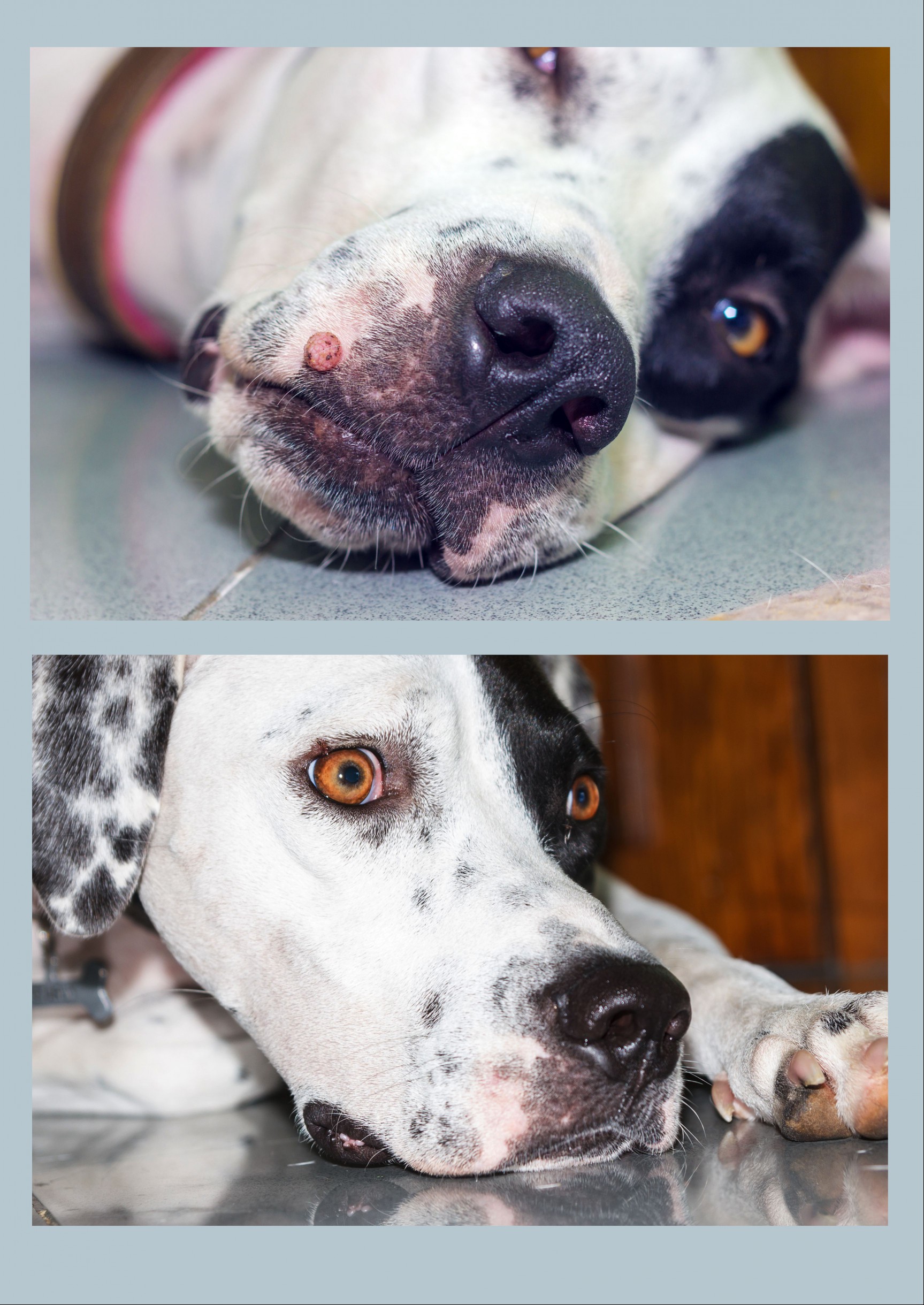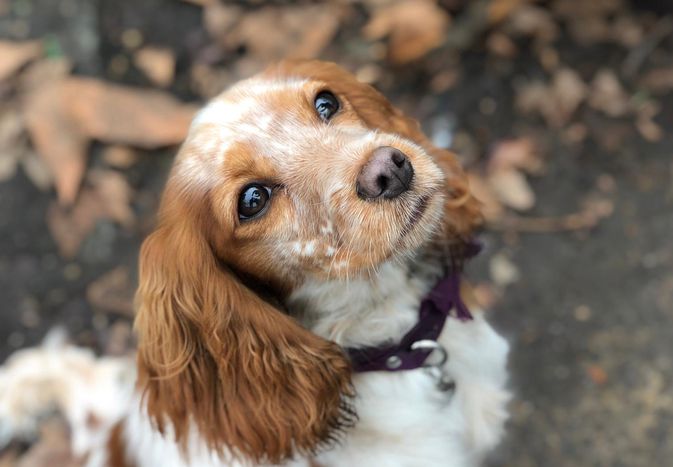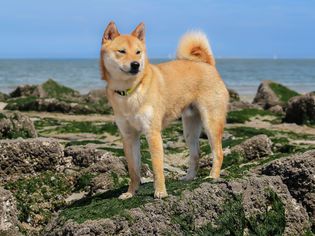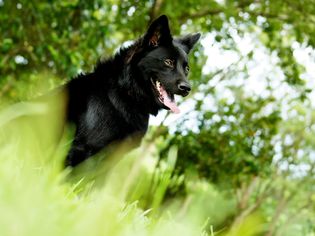Warts are fairly common on dogs, but although unsightly, they aren't usually a problem or a threat to your dog's health. While the hands and feet are common spots for humans to develop warts, in dogs, these virus-caused bumps are most often located on the lips or inside the mouth, although they can pop up just about anywhere on the dog's body. You'll see one or more lumps, often shaped something like a piece of cauliflower. Some have a small "stalk" attaching the wart to the skin.
Young dogs under the age of two are the likeliest to develop warts, as their immune systems aren't yet developed enough to fight off the virus. Unless the wart becomes inflamed and breaks open, or grows into the dog's feet, there are rarely symptoms of these unattractive, benign skin growths.
Still, any skin growth on your pet can be alarming and may require veterinary attention if you are unsure of what the growth is, or if you know it's a wart but it becomes inflamed or infected. Here's what you should know about warts on dogs.
What Are Warts?
Warts are technically called papillomas. These non-cancerous skin growths originate from strains of the papilloma virus. There are many different types of this virus, each targeting a different species of animal, including dogs, cats, horses, and humans. The virus that commonly causes warts in dogs is CPV-1, which stands for canine papilloma virus type 1. While contagious between dogs, CPV-1 does not infect humans or other pets.
Dogs may develop other types of skin bumps that can be mistaken for warts. These usually are other types of skin growths, such as sebaceous gland tumors, moles, or skin tags. These skin growths may be benign or malignant. All types of skin growths should be examined by a veterinarian so they can be properly diagnosed and treated.
Symptoms of Warts on Dogs
Most often, the only indication that your dog has warts are the lumpy growths themselves. Warts can appear quite suddenly, even overnight. While occasionally a wart will appear on its own, it's more common for them to sprout in clusters.
Occasionally, a wart might become inflamed or infected, leading to secondary symptoms.
Warts on dogs may be round, oval, or irregularly shaped with a cauliflower-like appearance. Sometimes, the wart appears to have a small stalk, but many attach directly to the skin. They are usually a shade of pink to red, although they can sometimes be pale or white. Many warts are quite small, but they can potentially grow to be as large as an inch across.
Canine papillomas are usually seen on dogs' muzzles, lips, and inside their mouths on the gums, soft palate, and throat. They can also sprout around the eyes, on the abdomen, between the toes, and on the footpads.
Warts may become inflamed, infected, and painful when found in areas prone to friction or chewing. If this happens, the wart might break open and bleed. If inside the mouth, your dog might develop bad breath. In severe cases, warts may get in the way of eating, breathing, and swallowing. Veterinary treatment is necessary if warts have an impact on your dog's quality of life.

Causes of Warts
The papilloma virus is very contagious. The type of papilloma virus that infects dogs, CPV-1, is spread between dogs by direct contact. Your dog can catch the virus by touching another dog, such as sniffing or licking each other's faces. Or your dog might contract the virus by sharing a water bowl, bedding, or toy with an infected dog. The virus easily enters the dog's body through cuts or abrasions, or through soft, moist skin such as the mucus membranes inside the dog's mouth. Tick, flea, or mosquito bites can also become ports of entry for the virus.
CPV-1 generally has an incubation period of up to two months before any symptoms appear. The virus penetrates the dog's cells and causes them to reproduce more rapidly than normal, while simultaneously suppressing genes that would slow cell growth. Once the warts appear, they usually rapidly increase in size for several weeks.
Warts almost always occur on dogs that are younger than two years of age, because older dogs have mature immune systems that fight off the virus before it causes symptoms. However, older dogs with compromised immune systems can occasionally also develop warts.
Diagnosing Warts on Dogs
Your veterinarian will probably diagnose the warts based on their characteristic appearance. However, if the diagnosis isn't clear, the vet might order a fine needle aspiration (FNA) of the wart, which involves using a needle to suction a few cells from the growth. The sample is then examined under the microscope in search of characteristic cell changes. If the diagnosis is still uncertain, a biopsy might be ordered, in which a piece of the wart, or the entire growth, is removed and examined microscopically.
Treatment
Papillomas generally do not require medical treatment unless they become irritated, infected, or grow large enough to cause discomfort. In most cases, warts go away on their own within a month or two as the dog's immune system learns to fight the virus. However, some dogs will need medical intervention.
One potential treatment consists of crushing the warts with a surgical tool. This stimulates the dog's immune system to fight the papilloma virus and generally leads to the warts healing within a few weeks. Your dog will be sedated for this procedure.
Other surgical options are removing the wart with a scalpel or freezing it. Rarely, warts on dogs are treated with interferon, which is an immune-stimulating drug, or by creating a vaccine from the dog's own warts. These last two options are usually only used on dogs with severe symptoms, such as difficulty breathing or swallowing due to large warts within the throat and mouth.
Your veterinarian may refer you to a specialist, such as a veterinary dermatologist for treatment of severe canine papillomas.
Prognosis for Dogs with Warts
Because warts typically disappear on their own even without treatment, the prognosis for your pet is excellent. Occasionally, however, warts may reoccur, particularly in animals with compromised immune systems.
How to Prevent Warts
Since dogs develop warts after contracting CPV-1 from another dog, the only way to prevent them is to keep your dog from coming into contact with other dogs that have warts. This may happen at a dog park or groomer if someone brings a dog with warts to the environment.
Canine papilloma virus can live in the environment for a long time, so you should wash any bedding, toys, and bowls shared by other dogs known to have warts.
If your dog has papillomas, do not allow your dog to come into contact with other dogs until all warts have gone away on their own. Ask your veterinarian for advice on when it is safe to let your dog be around other dogs.
Are Warts Contagious to Other Animals?
While humans definitely can develop warts, the papilloma viruses that infect people are different strains than the one that infects dogs. There are also specific strains of papilloma virus that infect cats, although it is much less common for cats to develop warts than humans or dogs. But the bottom line is that you don't need to worry about catching warts from your dog, or about you yourself giving warts to your pet. Nor can your dog and cat catch warts from each other.








